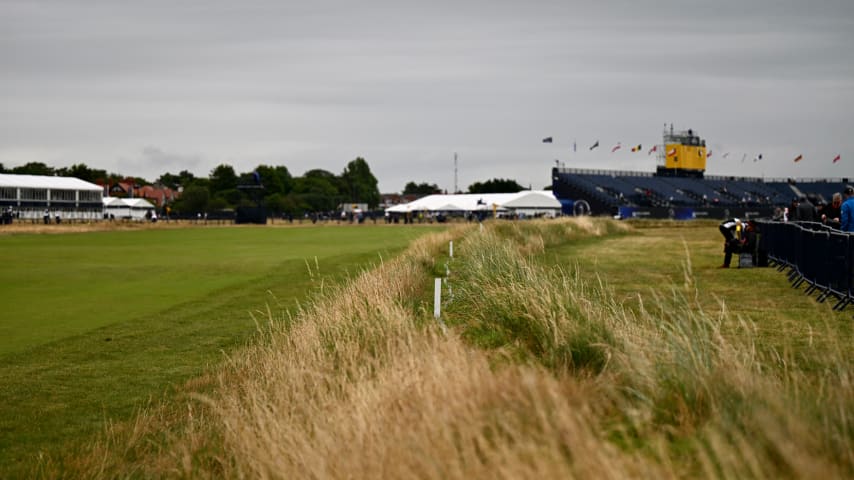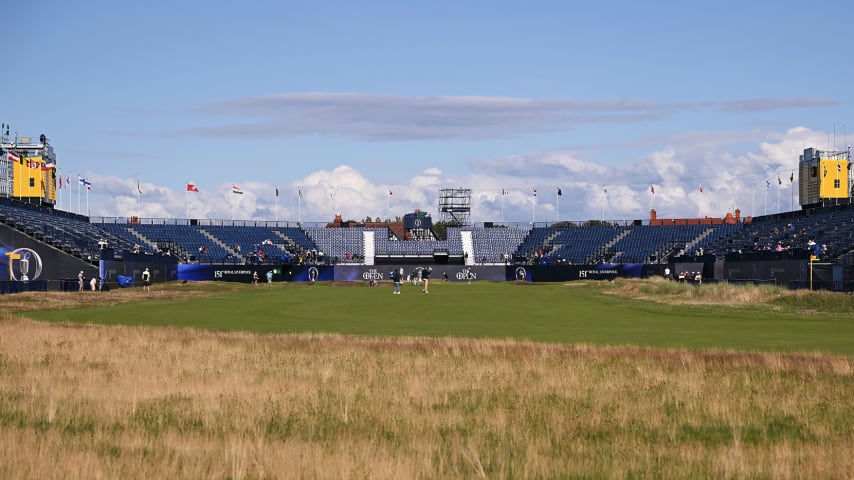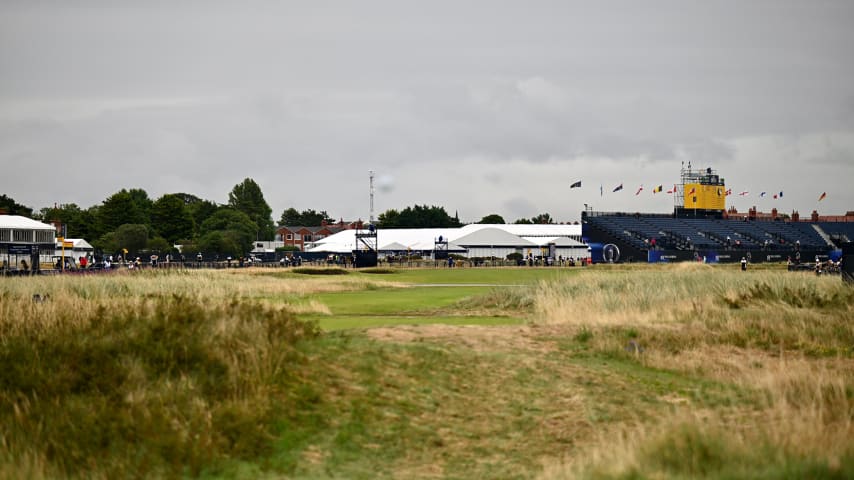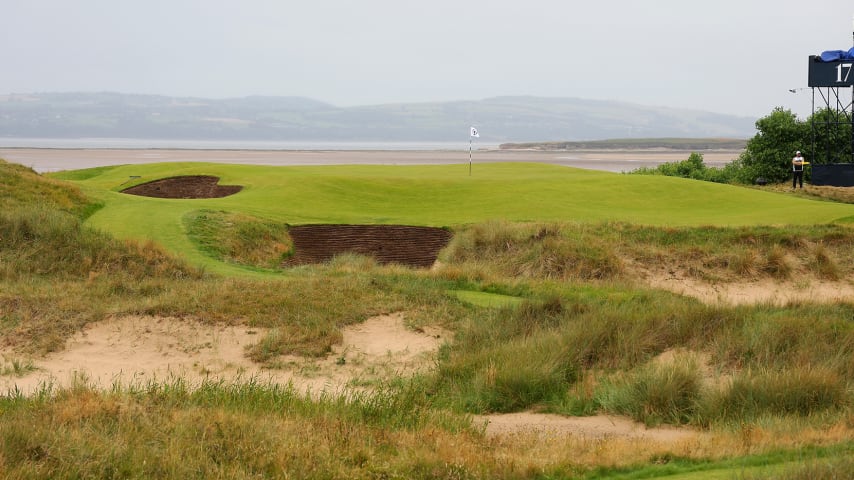Internal OB adds to challenge of Royal Liverpool’s 18th for The Open
4 Min Read

Royal Liverpool will also feature an all-new par-3 17th hole
HOYLAKE, England – The internal OB that lines several holes at Royal Liverpool Golf Club was one of the topics before the start of The Open this year, and its impact has quickly been felt.
Both Rickie Fowler and Adam Scott were under par when they arrived at the par-5 finisher. Both players hit shots out of bounds en route to big numbers that put them in the black.
Fowler, the runner-up at Royal Liverpool in 2014 and recent winner at the Rocket Mortgage Classic, was 2 under for his first 17 holes. He found the fairway with his final tee shot but proceeded to hit two shots out of bounds and make a triple-bogey 8.
“I think it’s fine. It’s part of links golf,” he said. “You get some quirky stuff here and there, and it’s part of it. There’s plenty of little boundary walls in different places that come into play, and that’s part of links golf.
“Do I like it? Right now, probably not. But I think it’s part of links golf with some of the cool, different characteristics and kind of what make it so special.”
Scott was 1 under for his round before hitting his tee shot OB on 18 and making double bogey. Both players finished with 1-over 72s.

A general view of the 18th green for The 151st Open Championship at Royal Liverpool Golf Club. (Ross Kinnaird/Getty Images)
In the last Open at Royal Liverpool, the 18th hole played to a 4.8 scoring average. There were nine eagles but also 26 scores of double or worse. Those were six more scores of “seven” or higher than any other par 5 on the PGA TOUR that season.
Since the last Open at Royal Liverpool, the 18th tee was moved back 50 yards and the boundary, which denotes the old practice ground, will hug almost 20 yards closer to the fairway than it did nine years ago. Players who bail out will face penal pot bunkers on the left.
“The tee shot is now parallel to the out of bounds, so that gives you a better perspective, but the fact it has come in 20 yards does mean that the fairway’s narrower,” said John Heggarty, Royal Liverpool’s head pro, via The Open website. “Bunkers off the tee are a no-no on that hole because you literally just have to get it out and then you’re left with a very long third shot.”
The OB runs the entire length of the hole, bringing it into play on the second shot, as well.
The out-of-bounds at Royal Liverpool denotes a racetrack that used to sit in the center of the property. Small mounds called “cops” still mark where the track’s railings used to stick in the ground. This area then became the club’s practice ground and is the site of The Open’s tented village this week.

A general view off the 18th tee for The 151st Open Championship at Royal Liverpool Golf Club. (Keyur Khamar/PGA TOUR)
Internal out-of-bounds areas are like any other out-of-bounds areas in that a shot that winds up there will necessitate replaying the shot from the previous position with a one-stroke penalty. What can make it so frustrating is that the ball is visible and still could be played, if not for the white line demarcating the boundary.
Royal Liverpool’s dogleg-right third hole, which is normally the club’s opening hole, also features internal out of bounds tight down the right side of the entire hole. On the third hole, players can try to fly the OB and cut the corner off the tee or hit an iron and leave themselves with an approach of around 180-220 yards to a green flush against the same boundary. The boundary also is seen on the eighth hole but not really in play for The Open field.
Internal OB famously came into play at this tournament four years ago, when hometown favorite Rory McIlroy hit his opening tee shot at Royal Portrush in his native Northern Ireland out of bounds en route to a first-round 79.
The new par-3 17th hole, affectionately known as "Little Eye," will play just 136 yards towards the Dee Estuary that lines most of the back nine at Royal Liverpool. The green is elevated, with tall runoff areas and harsh bunkers surrounding the putting surface. Finding the putting surface will be a tall order, especially with rain and wind in the forecast for much of the week.

General view of the new 17th hole at Royal Liverpool Golf Club. (Andrew Redington/Getty Images)
“They made a really difficult turtle-shell par 3,” said FedExCup No. 1 Jon Rahm, who has four victories this season but has cooled of late. “If you hit a good shot, put it on the green, you have a clear look at birdie. If you miss the green, you have a clear look at bogey.”
And even hitting the green is no guarantee of success, as significant undulations will lead to big swinging putts. It promises to provide a thrilling closing stretch to this year’s Open Championship.
“I think with even a four- or five-shot lead, there will no certainty of the outcome,” Martin Ebert, who led the renovation on Royal Liverpool, told PGATOUR.COM. “A two or a five or a six is possible at the short 17th, and eagle or double bogey at the 18th green are also in play given the fact that the hole is longer and the out-of-bounds closer to the playing line.”


















